Should you’re in search of a brand new monitor, you could be questioning which one to purchase and who wins in the case of the VS vs IPS vs TN combat. On this function, we’ll take you thru all of the variations between the principle three monitor panel varieties to equip you with the data you want. Earlier than we get began, although let’s put at present’s monitor panels in context.
Not so way back, your PC monitor alternative was easy. Should you needed a quick gaming display you bought a TN liquid crystal show (LCD) with a quick refresh price and low response time, which invariably meant compromising on picture high quality. In the meantime, if picture high quality was a key concern, you could possibly follow slower screens that used higher-quality IPS or VA LCD panels.
Nonetheless, LCD displays have now improved throughout the board. Now you can discover a variety of shows that present each good picture high quality and speedy gaming efficiency, as you’ll discover in our best gaming monitor information.
This selection is nice, nevertheless it does make selecting a monitor rather more difficult. So, that can assist you make sense of all of it, we’re going to clarify how an LCD works, and take you thru the variations between the varied panel varieties and their key advantages and disadvantages.
Why you possibly can belief our recommendation ✔ At PCGamesN, our consultants spend hours testing {hardware}, video games, and VPNs. We share sincere, unbiased opinions that can assist you purchase the very best. Discover out how we test.
How LCD displays work
The ideas of how an LCD works are the identical no matter what sort of LCD expertise a panel makes use of. At its most elementary degree, you will have a supply of sunshine (the backlight) then a layer of liquid crystal and numerous different filters that manipulate the sunshine, blocking it off or altering its shade, to provide the ultimate picture.
Extra particularly, the important thing precept that enables LCD displays to work is the power to polarize mild. That’s the place the randomly oscillating waves produced by a lightweight supply are filtered, so solely these waves oscillating in step with the gaps in a polarizing filter (polarizer) are allowed to move by way of it.
Put one other polarizer in the best way of the sunshine and the sunshine will proceed to move by way of it, as long as the orientation of the second polarizer is similar as the primary. Nonetheless, rotate the second polarizer and it blocks the sunshine. Provided that the waves from the primary filter are twisted spherical to be in step with the second polarizer, can the sunshine move by way of, which is the place these liquid crystals come into play.
Liquid crystals
Liquid crystals are precisely what their identify suggests. They’re a liquid however additionally they have a few of the ordered structural properties of a crystal. Extra particularly, the molecules of a liquid crystal may be in considered one of a number of states or phases someplace between the 2 extremes of being a crystal and a liquid.
One such state is named smetic, the place the molecules type full layers however every layer can transfer simply over one other one. Nonetheless, the state that’s of curiosity right here is named nematic. That’s the place the molecules can transfer freely however will are likely to wish to keep pointed in the identical route – a bit like how the matches in a field can transfer round one another however nonetheless all face the identical route.
Crucially, liquid crystals may diffract mild, identical to many typical crystals. As an unordered pool, liquid crystals will type into semi-structured patterns, which create fairly diffraction patterns when polarized mild is handed by way of them. Nonetheless, organize them right into a grid of pixels, whereas rigorously controlling them, and so they can be utilized to twist the sunshine in an effort to get it by way of that second polarizer.
Do the twist
A TN LCD is essentially the most fundamental type of LCD panel. In it, two polarizing filters are organized at 90 levels from one another, and a skinny layer of liquid crystal sits between them. By having a floor that seeds the crystals to type in a sure route in step with the polarizers, the liquid crystal naturally kinds a twisted sample between the 2 polarizers, giving the expertise its identify: twisted nematic (TN).
On this state, mild can move by way of the general setup. Nonetheless, by making use of a voltage to the crystals, they are often compelled to level straight in the direction of the sunshine supply, in order that they not twist the sunshine, inflicting it to be blocked. Alter the quantity of de-twisting and you may alter the brightness of the pixel.
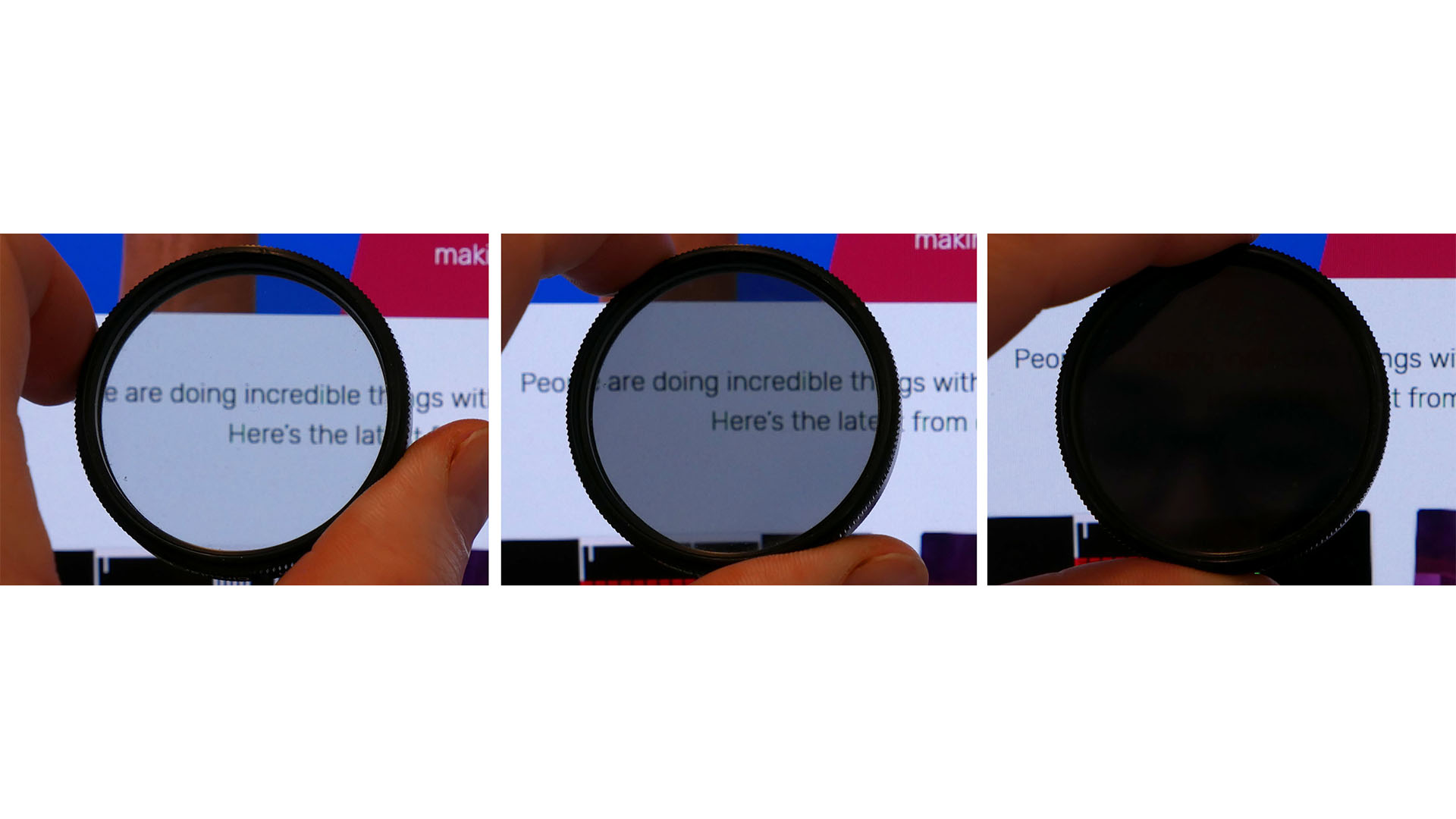
From left to proper: A polarizer in entrance of an LCD at 0 levels, 45 levels, and 90 levels
The precept of twisting liquid crystals is used to energy all LCDs, with various kinds of panel using totally different crystal and polarizer preparations to enhance a few of the shortcomings of TN LCDs. Earlier than we delve into these variations, although, it’s price establishing a few of the finer particulars of how the entire image is shaped.
Sub-pixels and RGB filters
We’ve now established the fundamentals of how an LCD pixel may be shaped, however there’s slightly extra to creating a full-color monitor. For a begin, there’s the concept that all shade photos on computer systems are shaped from the mixture of purple, inexperienced, and blue mild.
So, to create a coloured pixel, you want three smaller sub-pixels that mix to create the 16.7 million colours produced by a typical 8-bit shade depth show. There are additionally shows that use 6-bits of shade however use strategies akin to anti-aliasing (dithering and FRC) to supply the looks of 8-bit shade whereas 10-bit shows can produce even finer variations in shade – as much as 1.07 billion colours.
How an LCD truly works (usually), then, is by having a single supply of white mild that’s polarized after which separated right into a grid of tiny sub-pixels. The brightness of the sunshine is then manipulated by the liquid crystals (as managed by a thin-film transistor layer, therefore the time period TFT) and handed by way of considered one of three purple, inexperienced, or blue filters earlier than being fired out by way of the ultimate polarizer.
Shade gamuts and backlights
The place monitor tech begins to get extra advanced is when you think about the various kinds of backlights that may be employed. Most LCDs now use a single row of white LEDs (they used to make use of chilly cathode fluorescent bulbs), which sit alongside the underside of the display. By way of a sequence of reflective and diffusive surfaces, the sunshine is evenly unfold out over the entire again floor of the display, the place it’s then mirrored by way of the LCD.
Nonetheless, there are just a few different variations on LCD backlights. For one, you may get screens that use three totally different colours of LED to create a wider vary of colours than a single white LED. This strategy was historically how skilled extensive shade gamut shows had been created. There are additionally shows the place LEDs are positioned immediately behind the LCD, reasonably than simply alongside one edge beneath it. Such a setup can probably permit for a extra uniformly backlit show, which is once more notably desired for skilled customers.
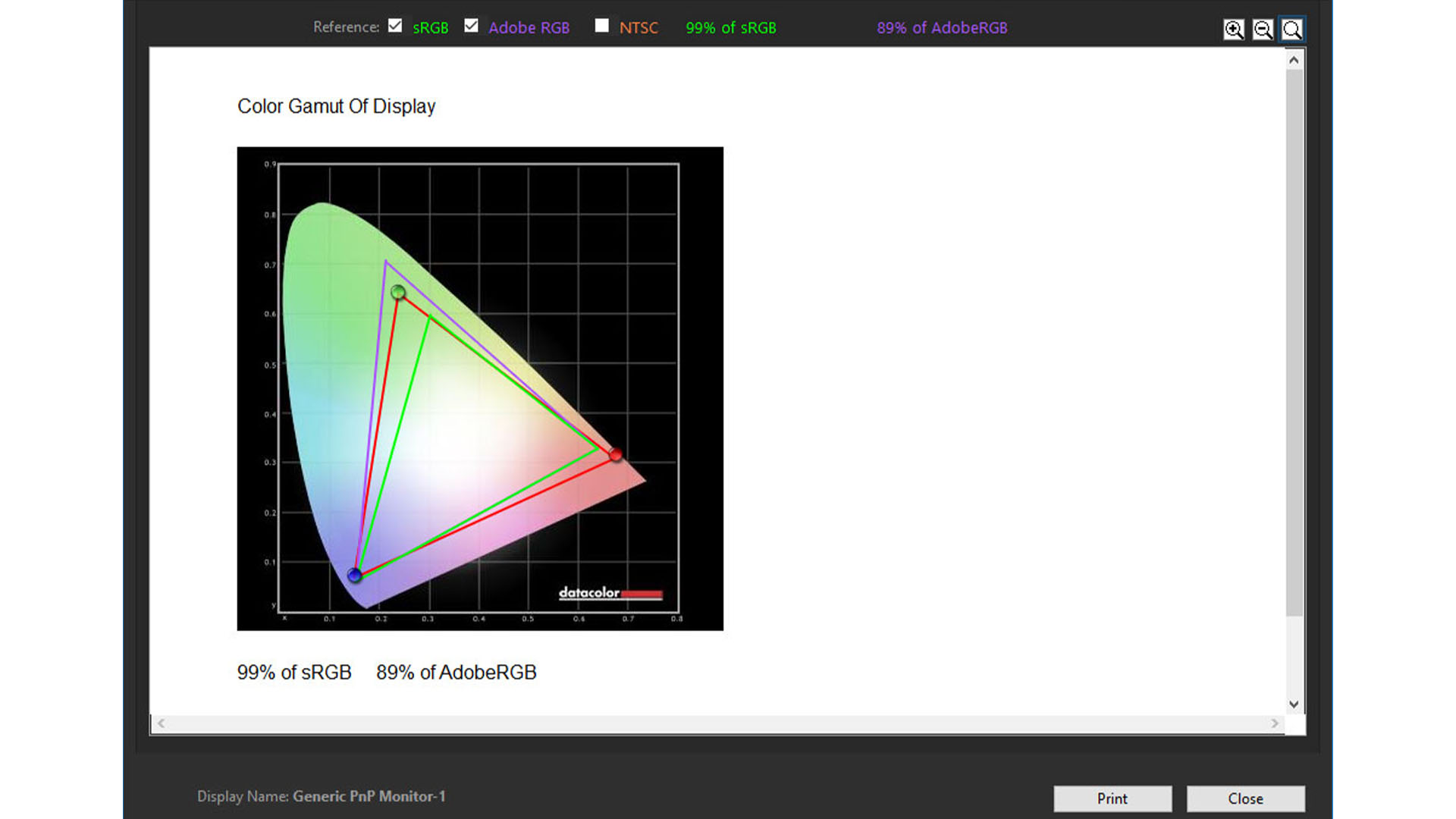
What’s extra, immediately backlit shows can let you individually management the brightness of various areas of the backlight. That capacity is useful as a result of all LCD panels fail to fully block all the sunshine from getting by way of them, even when a pixel is off. By having the backlight itself flip off, you possibly can create true darkness, for a better distinction show.
Displays that use a grid of many backlights on this manner are generally known as full array native dimming (FALD) shows, such because the Asus ROG Swift PG27UQ. Such displays presently supply the head of picture high quality for LCDs.
Monitor panel varieties
TN LCDs
Having established the position a liquid crystal panel performs in an LCD, we are able to now discover the various kinds of LCD, beginning with the unique and most elementary variant, TN. This expertise has remained largely unchanged since its inception. It nonetheless makes use of these two polarizers oriented 90 levels from one another and a twisted crystal construction that’s de-twisted when the pixel is activated.
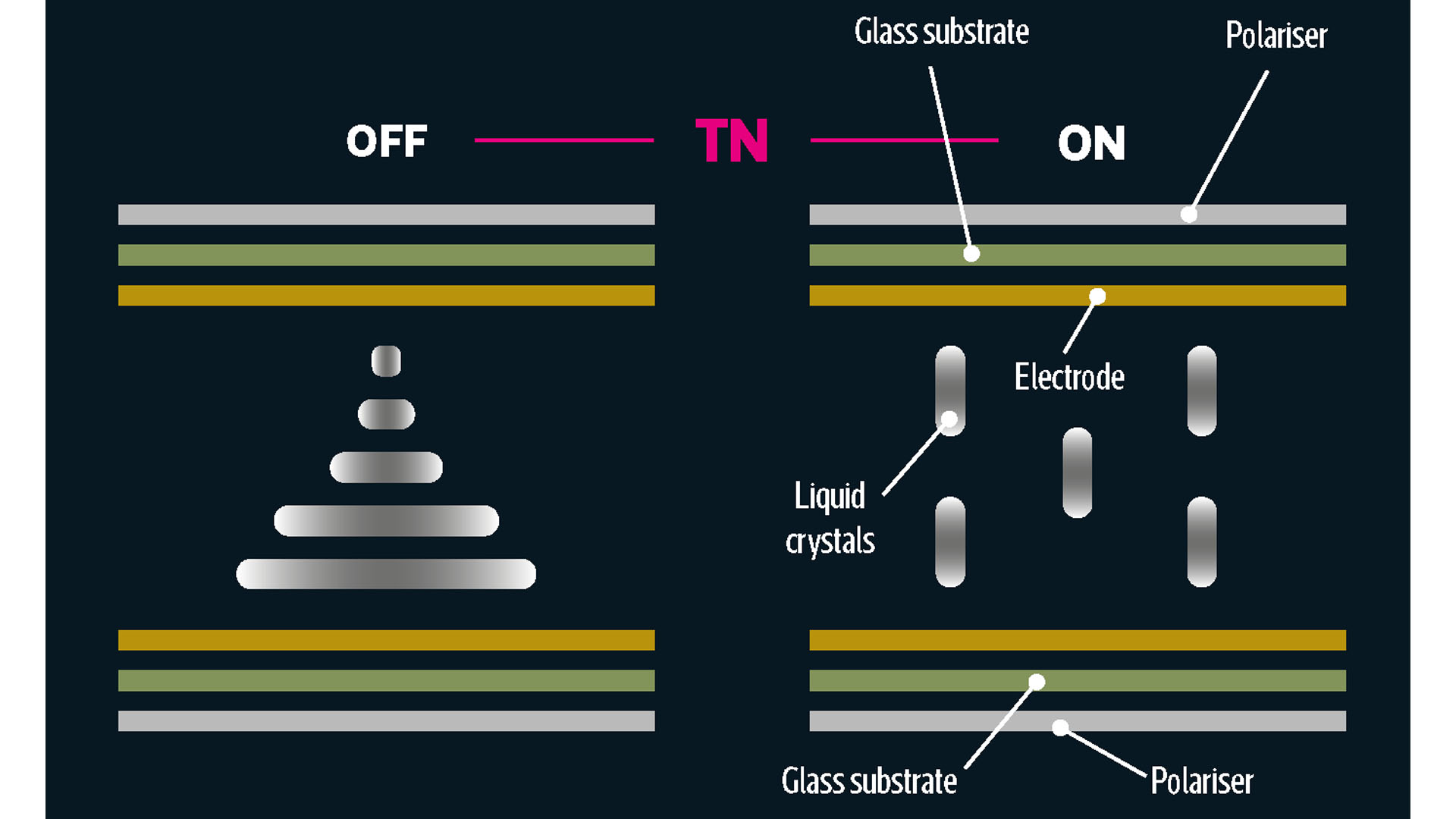
The primary space the place we have now seen enhancements, aside from display measurement and backbone, is the refresh price. TN LCDs are inherently very fast at altering from an on to an off state, with pixel response instances as small as 0.5ms.
This pace led to them being the primary LCD varieties for use at larger refresh charges, with 144Hz screens debuting over a decade in the past. Extra lately we’ve seen 240Hz, 360Hz and even sooner screens. This quick response is the important thing upside of TN LCDs, however additionally they have a number of downsides.
The primary one is viewing angles. As a result of the twisted liquid crystal molecules are inherently positioned at a wide range of totally different angles to the aircraft of the display, there’s extra variation within the polarization angle of the sunshine, and the trail it takes earlier than it hits the second polarizing filter. Because of this, the picture you see varies significantly as you progress across the space in entrance of the display.
There’s additionally a knock-on impact in the case of shade accuracy and distinction, with the extra variably scattered mild decreasing the power to precisely isolate each the brightness and shade of a pixel. Fashionable TN panels have improved all these elements considerably, and the higher-quality 8-bit shade (reasonably than 6-bit) panels are sufficient for many makes use of.
IPS LCDs
The primary various LCD expertise to be developed was IPS, made by LG. It takes a radically totally different strategy to TN by mounting the electrodes that management the crystal orientation on the identical floor, reasonably than throughout opposing sides of the liquid crystal layer. As such, when a voltage is utilized throughout the electrodes, the crystals flip from their resting vertical place to a horizontal place, like a clock dial going from 12 o’clock to three o’clock.
As a result of the crystals are at all times parallel to the aircraft of the display, reasonably than turning perpendicular to it (as with TN LCDs), they’re named in-plane switching (IPS) LCDs. This better management over the orientation of the crystals (and the next mild paths) results in IPS LCDs having significantly better viewing angles than TN LCDs, together with higher shade accuracy.
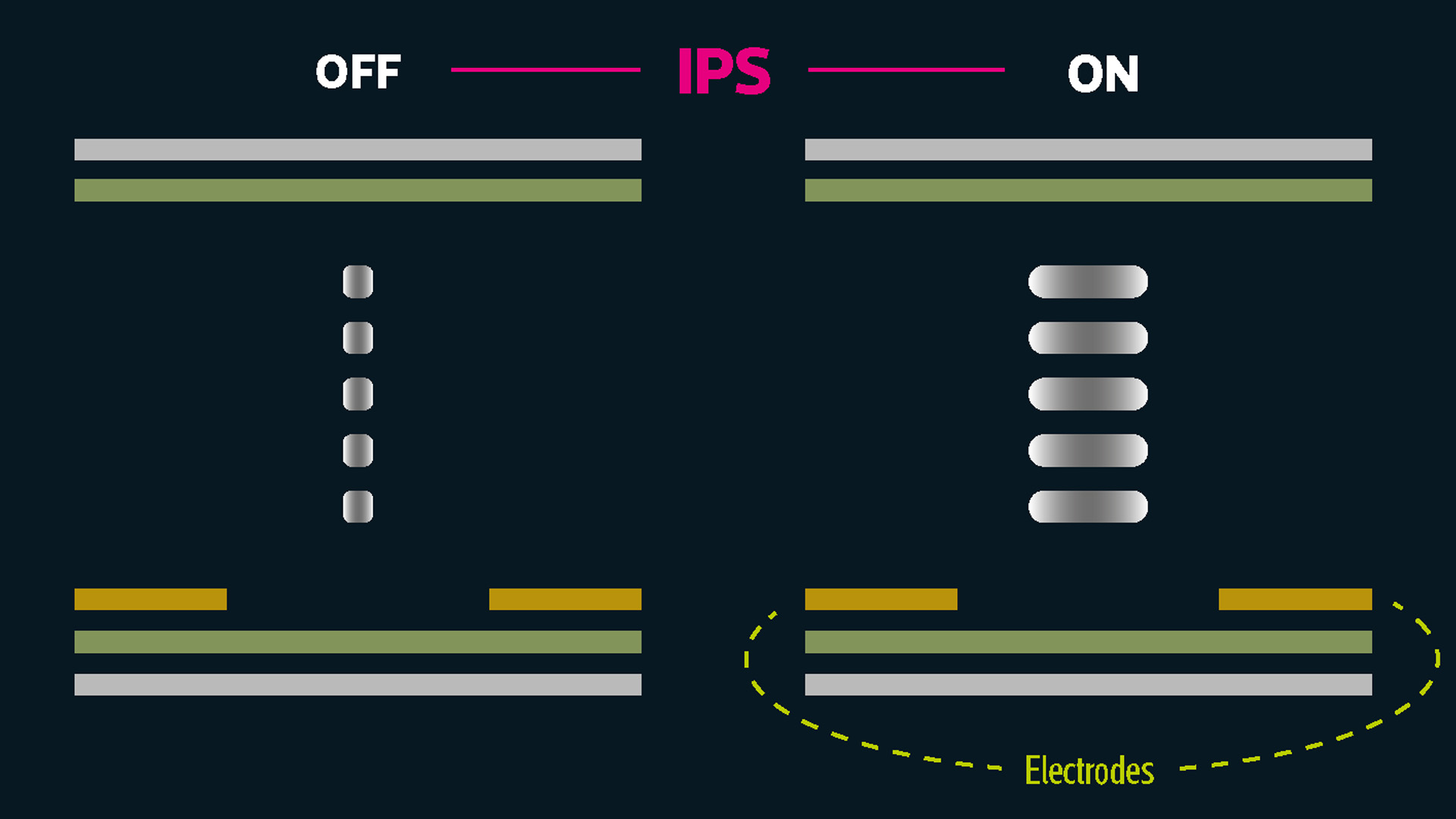
The primary draw back to IPS LCDs is their response time, with early fashions having response instances as gradual as 60ms. Nowadays, this determine has dropped to as little as 1ms on some variants and for some remoted shade transitions (response time varies relying on which shade the pixel is altering to and from), making for adequate efficiency which you could get 360Hz IPS gaming displays such because the Alienware AW2523HF. Nonetheless, common response time continues to be behind TN, making that panel sort nonetheless the only option if excessive efficiency is required.
The second drawback with IPS screens is what’s generally known as ‘IPS glow’, the place mild leaks from behind the LCD to type a lighter patch on the display when considered at an angle. You’ll seldom discover it in regular use on good-quality screens, however it may be extra apparent on poorer-quality screens and may be distracting when the display is displaying a darkish picture.
It’s the latter drawback meaning IPS isn’t essentially the only option for watching video. Notably, although, if IPS is mixed with FALD expertise, IPS glow is all however eradicated, making it the very best alternative for video.
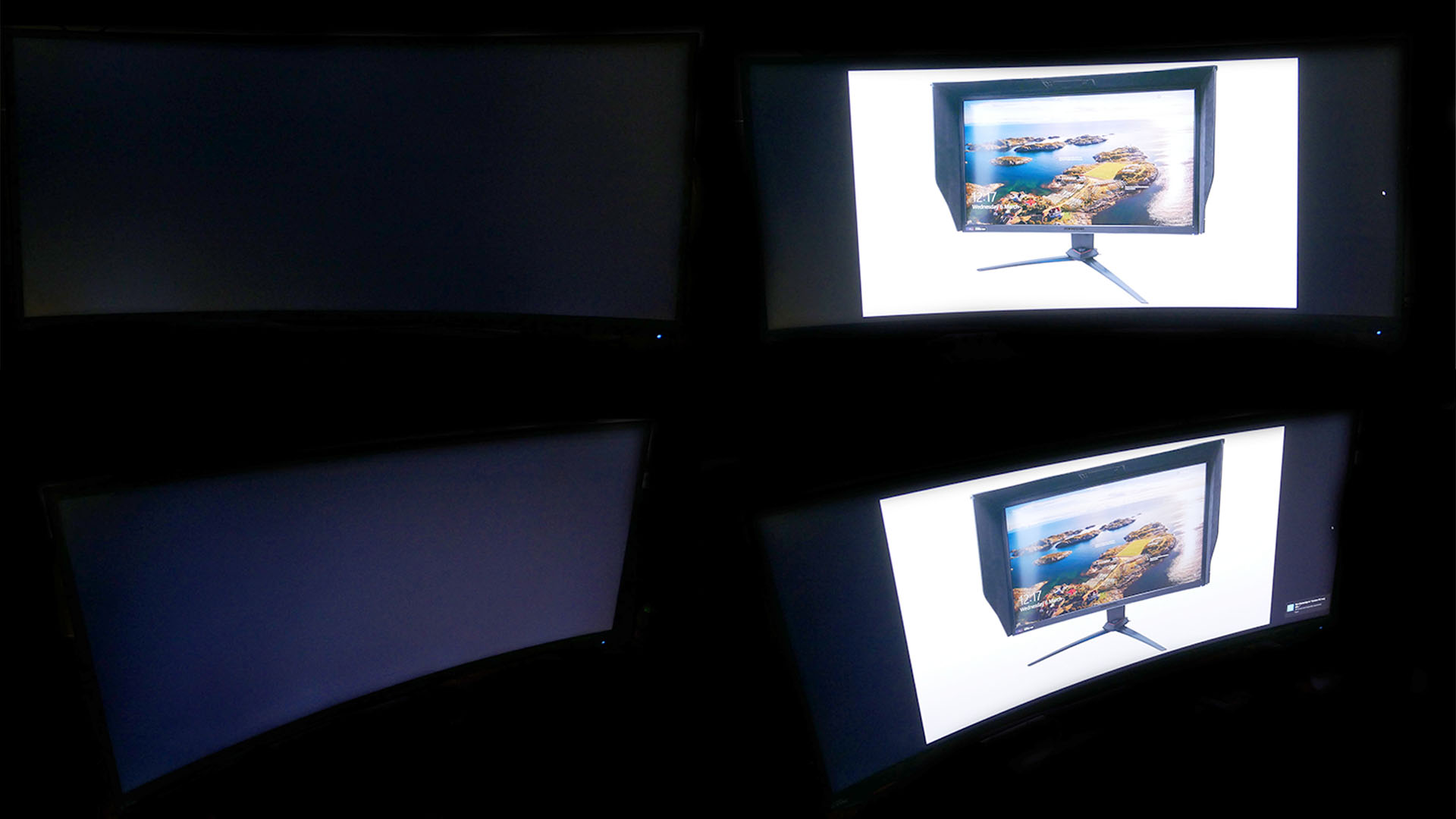
IPS display from entrance and aspect displaying IPS is just actually noticeable on darkish photos considered from the aspect (impact exaggerated)
In addition to the unique IPS specification, there have been many refinements and various takes on the fundamental thought of IPS screens over time. One of the vital widespread variations is LG’s personal Superior Excessive-performance IPS (AH-IPS), which features a clear electrode for larger mild transmittance and improved energy consumption. One other widespread variation is e-IPS, which is usually thought of a finances variation with barely worse viewing angles than IPS – it tends for use in 6-bit shade panels.
There’s additionally Samsung’s Aircraft to Line Switching (PLS) expertise, which is functionally an identical to IPS, and Superior Hyper-Viewing Angle (AHVA), which is made by AU Optronics. As with PLS, its traits are basically an identical to IPS.
In the meantime, the most recent iteration of IPS is LG’s new IPS Black expertise. This basically modifications the best way IPS panels work sufficiently to supply a giant enhance in distinction – from usually 1,000:1 to 2,000:1 – but in addition makes for a slower response time, so it’s presently solely out there for 60Hz non-gaming shows (although would nonetheless work tremendous for slower-paced video games that don’t want excessive refresh charges).
VA LCDs
The ultimate major variant you’ll discover for LCD displays is VA or vertical alignment, so named as a result of the liquid crystals usually sit vertically (perpendicular) with respect to the display’s floor, after which twist spherical when a voltage is utilized.
Like TN-type LCDs, the 2 electrodes that apply voltage to the liquid crystal sit both aspect of the crystal layer. Nonetheless, not like with TN, the electrodes are offset in such a manner that the crystals don’t level immediately ahead however tilt to the aspect. As such, the pixels are off by default, and it’s solely when a voltage is utilized that the crystals align in a manner that enables mild to twist and move by way of the second polarizer.
It’s this ‘off by default’ state and crystal sample that enables for the principle benefit of VA shows, which is their distinctive distinction. Whereas IPS and TN shows usually ship distinction ratios of round 1,000:1, VA shows recurrently have a distinction ratio of three,000:1 and may even hit 5,000:1. This excessive distinction ratio is improbable for watching video, because it provides realism and depth to the picture, bringing scenes akin to evening skies or area battles to life.
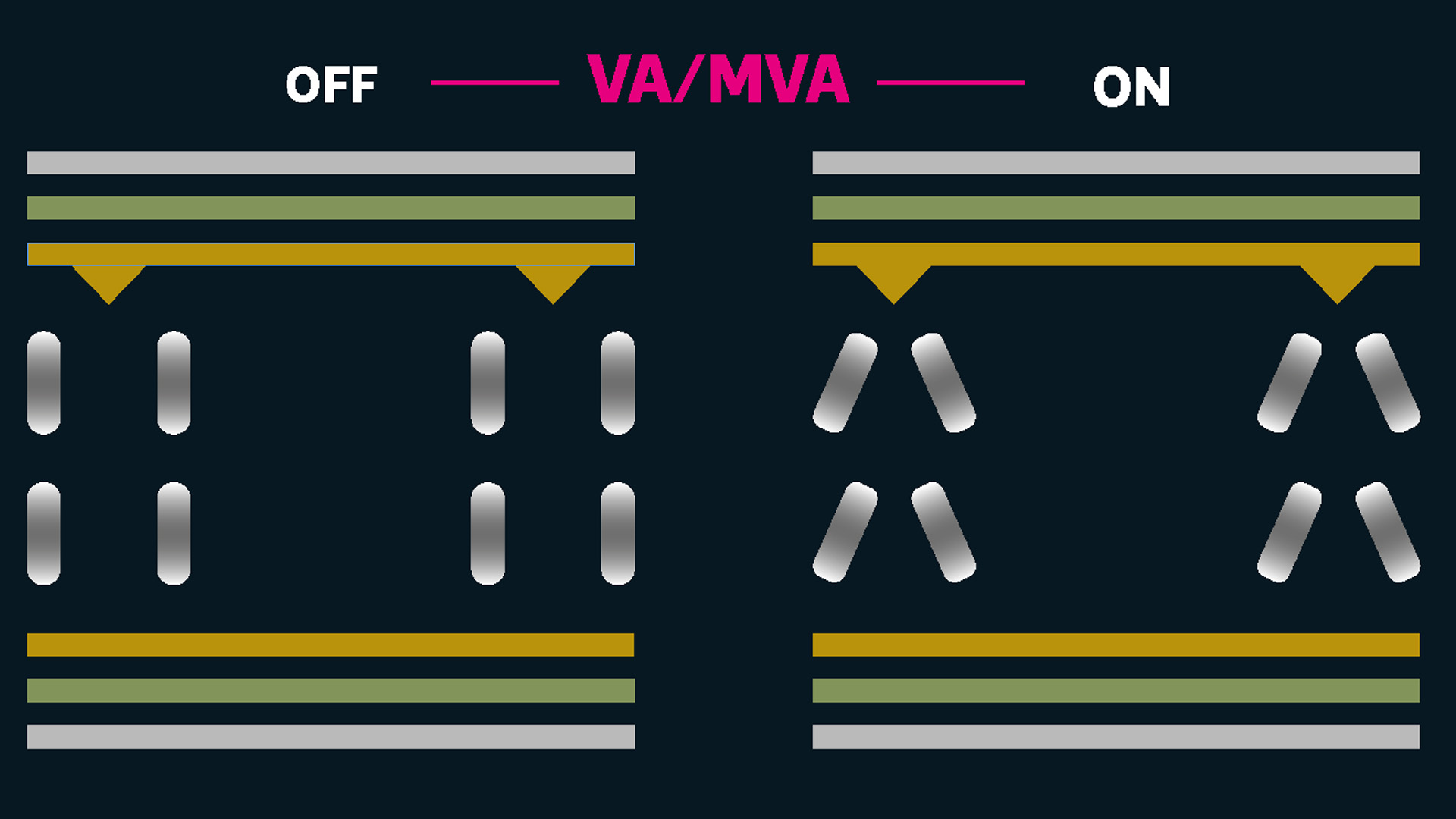
Excessive distinction is usually fascinating elsewhere as effectively, akin to when gaming, though technically PCs are designed to work with a 1,000:1 distinction ratio, as that’s the usual for the sRGB shade area they use. Excessive distinction can also be much less fascinating for studying textual content and different desktop work because the sturdy distinction in brightness may be fatiguing for the eyes. Additionally, whereas excessive distinction is fascinating for video games the place you wish to immerse your self within the visuals of the world, for aggressive gaming it may well make it more difficult to see objects in darker components of a picture.
There are different downsides to VA LCD expertise too. The primary is an oddity in its viewing angles. As a result of the expertise ideas over the liquid crystals sideways, you’ll usually must view such a panel from a 45-degree angle to make it usable. To get round this challenge, VA LCDs have a number of domains inside every sub-pixel, every of which directs its liquid crystals in alternating instructions. It’s the web mixture of the 2 instructions that leads to the great total viewing angles.
Nonetheless, whereas the mixed picture is nice, it’s not excellent. Should you take a look at the display, and transfer your head from a superbly perpendicular angle to barely off-axis, you’ll see a change within the picture, with distinction truly bettering.
This delicate alteration of the picture as you progress out and in of perpendicular signifies that, in sensible phrases, VA shows can’t actually compete with IPS shows for viewing angles, particularly in the case of color-critical work. They do, nonetheless, have improbable distinction, which is right for watching films. One in every of our favourite VA displays is the Samsung Odyssey Neo G8.
The opposite key drawback is that VA expertise has a gradual response time. Whereas the most recent variations declare response instances as little as 1ms (and you may get 200Hz+ shows), the real-world expertise is usually noticeably worse than IPS, which itself is worse than TN. The gradual pixel response manifests as a smearing, ghosting impact when the on-screen picture is shifting. You possibly can see it finest utilizing BlurBusters’ UFO motion test.
As with IPS screens, there are a variety of various variants of VA LCDs, lots of which have come and gone. Nonetheless, the 2 major variants which might be available are MVA, developed by Fujitsu, and PVA, developed by Samsung. Whereas they’re totally different in some areas, they each basically ship the identical efficiency traits and use the identical core ideas, and as such they are often thought of equal.
VA vs IPS vs TN – viewing angles
The superb viewing angles of IPS screens end in nearly no picture distortion when considered off-axis, though they do undergo from IPS glow. VA screens present slightly extra shade variance, whereas TN screens undergo from important modifications from all angles.
VA vs IPS vs TN – response time
The gradual pixel response time of VA screens leads to a protracted path of ghost photos on shifting objects. The trailing photos have extra shade variation too, making the ghosting extra distracting. IPS has shorter trails and no shade distortion, whereas TN panels are a lot faster to reply, leading to a far clearer picture.
VA vs IPS vs TN – distinction
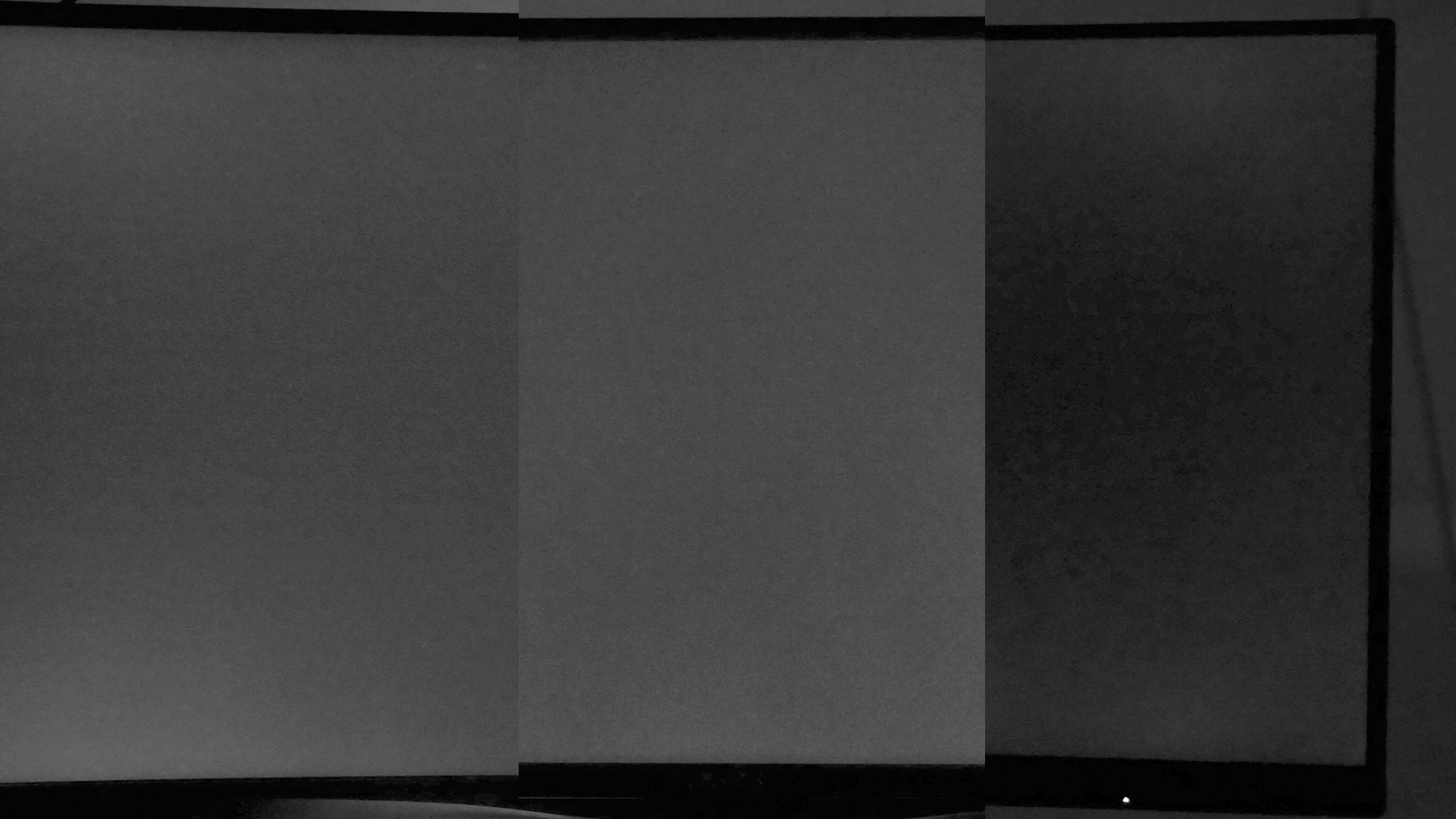
The decrease black degree of VA screens permits them to supply a higher-contrast picture (~3,000:1), which makes them notably good for watching films. IPS and TN screens have a brighter black degree for a given backlight brightness, leading to a decrease distinction (~1,000:1).
The picture above reveals the black degree on IPS, TN, and VA panels – in that order – with the VA panel being clearly a lot darker. Observe, picture brightness is falsely excessive in these pictures to display the impact.
Which LCD panel sort is finest for you?
The upshot of getting three various kinds of LCD panel in common use at present is that consumers now have a significant option to make, and whereas we’ve highlighted a few of the normal variations between these panel varieties, what you little question actually wish to know is simply which is finest for what and which must you purchase.
Greatest LCD panel sort for gaming
The one greatest think about bettering your gaming expertise is getting a better body price, and that applies to the refresh price of displays too. Nonetheless, the significance of this issue varies relying on the varieties of video games you play.
Whereas 60Hz is okay for slow-paced video games, any recreation the place there’s loads of motion on display – akin to racing games or first-person shooters – advantages from a sooner body price. Even a bump as much as 75Hz is worth it and 100Hz provides you a noticeable enhance. As such, even in the event you don’t think about your self a hardcore aggressive gamer, choosing a display with a refresh price larger than 60Hz is worth it.
The important thing issue is that, on this occasion, you don’t have to compromise a lot on picture high quality by going for a TN panel with a quick response time. There are lots of IPS and VA-based screens with a quick refresh price, offering a terrific compromise between easy gaming and nice picture high quality.
If, nonetheless, you’re actually into aggressive FPS gaming or different fast-paced video games, a quick response time is a must have function. Not way back we’d categorically steer folks away from any VA-based monitor for this use, although VA panels have gotten significantly better lately, with the Samsung show linked beneath being among the many fastest-responding panels you should buy, by some measures. Nonetheless, usually, we discover IPS or TN shows to have a extra constantly smear-free, sharper-imaged gaming expertise.
[widget for VA screen]As for IPS-based screens, they fare significantly better with there being loads of glorious shows that hit as excessive as 360Hz. Certainly, as a normal go-to gaming show possibility, we’d suggest most customers begin with a fast-refresh IPS display and go from there. A panel such because the LG UltraGear 27GP850-B will get you a terrific stability of decision, display measurement, refresh price and response time all for beneath $400.
[widget for IPS screen]In any other case, in the event you actually will need to have absolutely the fastest-responding panel for the utmost in gaming efficiency, TN continues to be the best way to go, though there are fewer and fewer top-end gaming shows that truly go for this panel sort – too many individuals need the higher picture high quality of IPS and VA.
[widget for TN screen]Furthermore, with the arrival of OLED gaming displays, the response time benefit of TN is blown away by how a lot sooner OLED shows reply. TN shows can common a 1-4ms response time whereas OLED shows are simply 0.1ms. Contemplating how significantly better OLED seems to be than any LCD for many purposes, it is smart that TN is a dying breed.
Greatest LCD panel sort for desktop work and picture modifying
Relating to the extra mundane computing duties, the principle issue is having a snug, sharp, steady picture that’s simple to view for a lot of hours at a time. It’s for that reason that TN shows are usually finest averted. The comparatively poor viewing angles and sometimes lower-quality shade replica of TN screens means they are often more durable on the eyes when attempting to deal with textual content and different tremendous particulars.
They’re additionally not superb for any work that requires notably correct shade replica, akin to picture and video modifying. Once more, the poor viewing angles can have an effect on how colours are perceived by the viewer, plus TN screens typically have a decrease shade depth and therefore poor shade accuracy. It may end up in you lacking some tremendous particulars in your picture, or seeing colours in a different way to how they need to seem.
It’s the same state of affairs with VA panels. The slight distinction in picture efficiency when considered on and off-axis means the picture isn’t fairly as steady as on IPS shows. Plus, the slight compression of colours, notably within the darker finish of the spectrum, could make it slightly more durable to identify tremendous variations in shade.
As such, our go-to advice for normal desktop work and duties the place shade accuracy is paramount is an IPS display. Cheaper screens that use a 6-bit e-IPS panel nonetheless have good viewing angles however aren’t fairly so good on shade accuracy, however in any other case (calibration apart) nearly any good high quality IPS show is the best way to go right here.
Once more, OLED is the brand new child on the block that in idea beats all LCDs for gaming and watching video however they’re nonetheless uncommon and costly. What’s extra, for normal desktop use they’ve a few downsides.
The primary is their tendency to undergo from display burn-in, which implies utilizing them for hours on finish with Home windows taskbars on present may imply these components get completely burnt onto the display. Additionally, their excessive distinction isn’t superb for studying textual content, although this may be overcome with software program or monitor settings to scale back distinction for studying.
Greatest LCD panel sort for video
Should you recurrently like to sit down again and watch video in your PC’s monitor, then we’d suggest a VA show. Distinction is king in the case of films, and VA is the clear chief right here – FALD shows and OLED apart – supplying you with the very best black ranges and most partaking picture of any LCD expertise. IPS Black seems to be set to present VA a run for its cash however we’ve but to check the expertise ourselves.
The commonly good viewing angles of VA additionally make it far superior to TN for sitting again and watching video, particularly in the event you sit again on a mattress or coach to look at video. The dearth of IPS glow additional enhances its credentials as this may once more be worse when considered from an angle and it most distracting when viewing darker photos as you would possibly count on in some films.
Finally, in a super world, a monitor ought to excel in any respect the above duties, and in idea the likes of OLED and micro-LED shows can hit that objective. Nonetheless, in the meanwhile, LCD stays the usual, so that you’ll must be sincere with your self when fascinated by your subsequent monitor buy: there could not but be the right monitor for everybody, however there’s most likely one which fits your most necessary wants.
To seek out out extra about our best choice of monitor for various wants, try our best gaming monitor information.





Comments are closed.